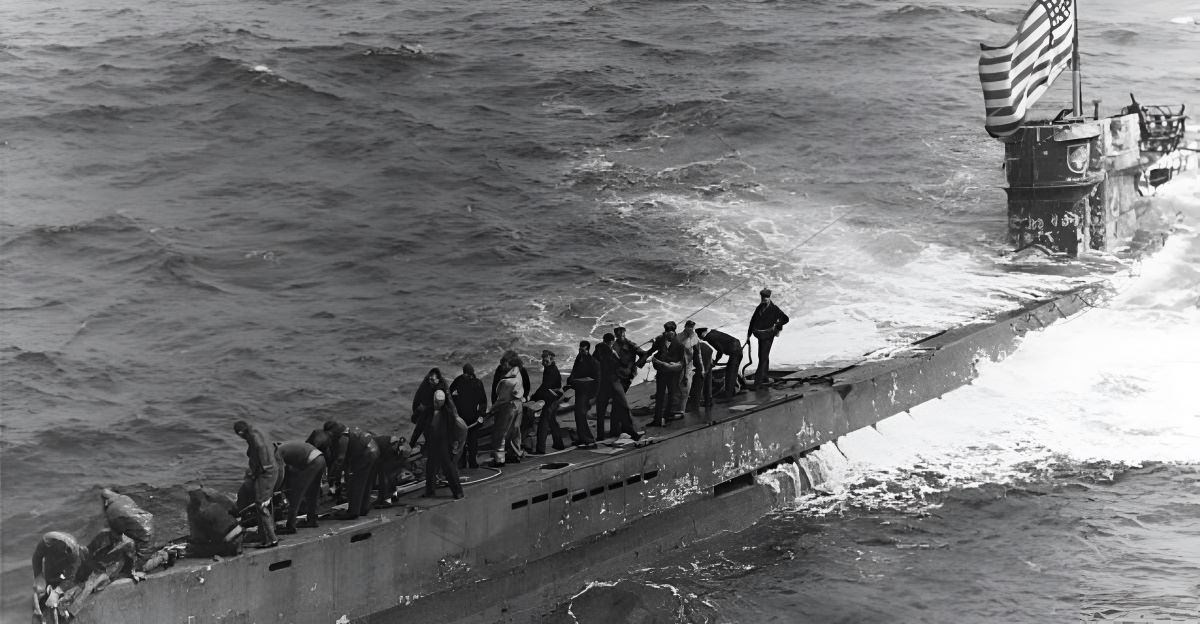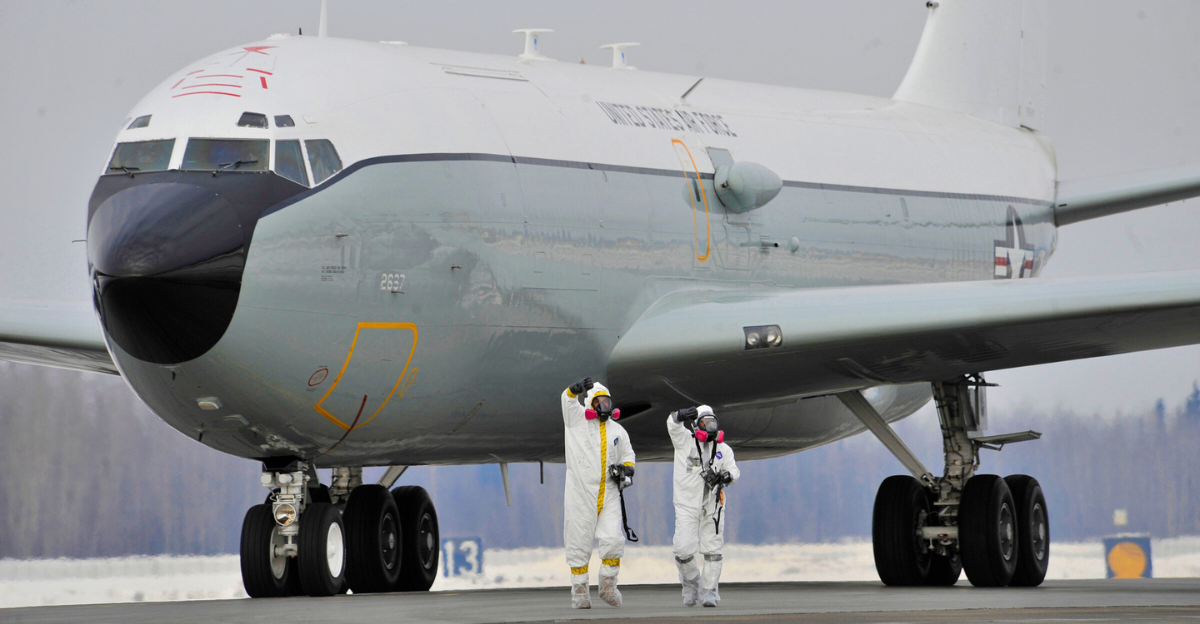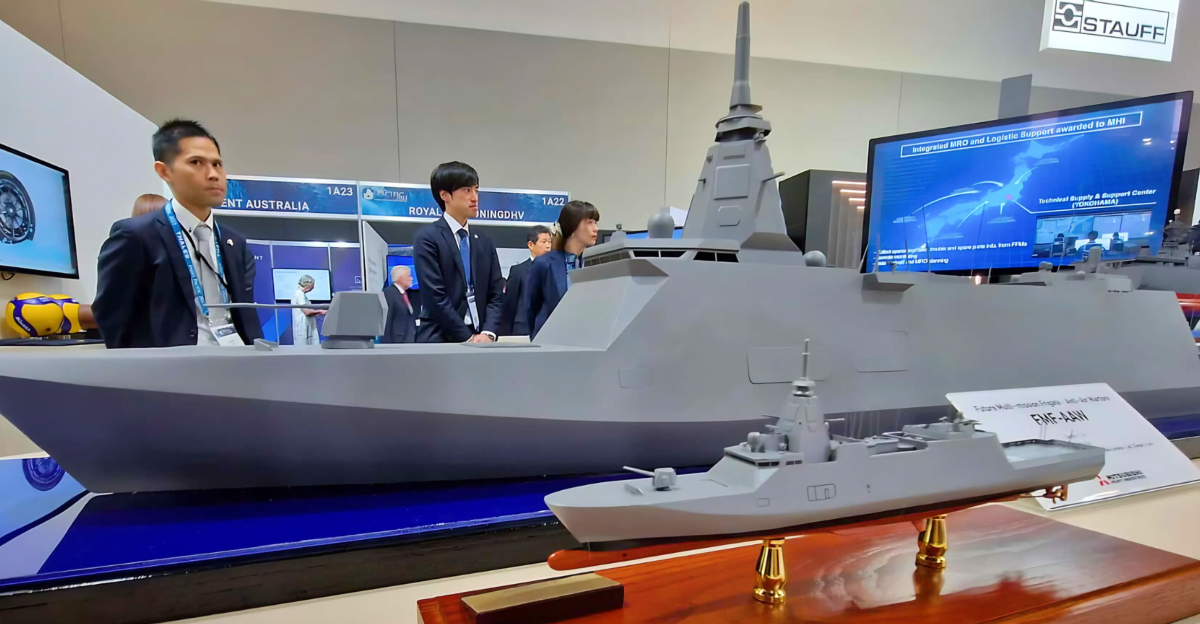
When ambition to be an industry leader turns into failure, people will certainly notice. North Korea’s ambitious drive to modernize its navy ended in public embarrassment when its newest 5,000-ton warship capsized during a launch ceremony attended by Kim Jong-un himself.
Kim Jong-un reportedly condemned the episode as a “criminal act” caused by carelessness and operational negligence, sending shockwaves through North Korea’s political and military ranks and resulting in the immediate detention of several officials. What could possibly have gone wrong?
The Grand Vision

Kim Jong-un’s grand vision for North Korea’s navy is nothing short of transformative. Over the coming years, he has committed to building and deploying increasingly sophisticated warships, including 5,000-ton destroyers and nuclear-capable submarines.
This ambitious modernization is a response to extend North Korea’s operational reach far beyond its own shores. “I feel infinitely honoured to proclaim the birth of the first warship of a new generation,” said Kim.
The Chongjin Shipyard

The Chongjin Shipyard was historically known for producing cargo ships and fishing vessels, but in recent years, this sprawling facility has assembled the country’s largest and most sophisticated warships. Despite lacking some modern infrastructure found at rival yards, Chongjin’s pivotal position in the east and its feverish pace of development make it a cornerstone of North Korea’s maritime resurgence.
A Ceremony Meant for Glory

On May 21, 2025, Kim Jong-un, his daughter, and North Korea’s elite gathered for a highly publicized spectacle that was meant to change history. Kim Jong-un, clad in his signature black tunic, presided over the gathering with an air of supreme confidence, flanked by high-ranking generals, party elites, and shipbuilders.
The ceremony was as much a performance for domestic audiences, instilling pride and loyalty, as it was a message to the outside world: North Korea is determined to command the seas, whatever the cost.
Disaster Unfolds

As the 5,000-ton destroyer edged forward on its launching sled, a catastrophic loss of balance caused its stern to slip suddenly into the water while the bow remained stuck on land. In front of a stunned crowd and Kim Jong-un himself, the towering vessel tipped onto its side, crushing sections of its bottom and allowing seawater to rush into the stern.
The public acknowledgement of failure shattered the day’s celebratory tone and dealt a heavy blow to the regime’s prestige, turning a moment meant for triumph into one of humiliation.
The Technical Breakdown

Unlike previous launches using the conventional stern-first method, the Chongjin shipyard attempted a side launch, a maneuver rarely used for vessels of this size and typically reserved for smaller ships. The process relied on synchronized sleds sliding along guided tracks beneath the hull, but in this case, the cradle supporting the stern detached too early, causing the stern to abruptly plunge into the harbor while the bow remained stuck on land.
This imbalance “crushed” sections of the warship’s bottom, left it stranded at an awkward angle, and prompted a surge of seawater into the stern section. The root cause, experts argue, is poor coordination during the launch and insufficient modernization of shipyard infrastructure.
Kim Jong-un’s Public Fury

Grim-faced and visibly furious, Kim lambasted military officials, scientists, and shipyard workers for disgracing the nation at a moment designed to showcase its rising naval prestige, and declared that the fiasco had “brought the dignity and self-respect of our state to a collapse.” The supreme leader further demanded that the crippled warship be restored “unconditionally” ahead of the party congress, framing the recovery as a matter of political survival rather than mere technical repair.
“Kim Jong Un made a stern assessment saying that it was a serious accident and criminal act caused by absolute carelessness, irresponsibility, and unscientific empiricism … and could not be tolerated,” Korean Central News Agency (KCNA) reported.
Immediate Response to a Salvage Directive

Within hours of the failed launch, Kim Jong-un issued an uncompromising directive: the capsized warship was to be salvaged at any cost, and fully restored in time for the looming Workers’ Party congress. Salvage teams worked rapidly to stabilize the listing hull, employing salvage balloons, water pumps, and floating support craft to refloat the vessel and prevent further seawater ingress.
The destroyer, now moored upright in Chongjin harbor, was immediately subjected to hull inspections to assess internal damage. Plans are set to move her to a dry dock for an intensive seven—to ten-day repair sprint before any new launch attempt.
The Hunt for the Guilty

North Korea unleashed an intense, highly publicized campaign to pinpoint and punish those deemed responsible. Kim Jong-un directed a sweeping investigation, deploying prosecutors and maritime experts to probe every aspect of the botched launch.
Almost immediately, key figures from the Chongjin Shipyard—including chief engineer Kang Jong-chol, hull construction workshop head Han Kyong-hak, and deputy administrative manager Kim Yong-hak—were detained and interrogated, while shipyard manager Hong Kil-ho was also summoned for questioning.
The Ship’s Staggering Firepower

Bristling with launch tubes, advanced radar arrays, and multiple deck-mounted cannons, the vessel was designed to project an image of cutting-edge military might. On paper, it reportedly features a mix of vertical launch systems for land-attack and anti-ship cruise missiles, a suite of rapid-fire anti-air defenses, and a battery of heavy-caliber naval guns.
The warship was also rumored to incorporate technology aimed at submarine detection and electronic warfare, although outside experts remain skeptical about the true sophistication of these systems.
The Recovery’s Doubtful Success

After a flurry of emergency salvage work, satellite images confirmed the vessel had been righted and moved for further repairs, impressing some observers with the sheer speed and ingenuity of the effort. Yet defense analysts remain deeply skeptical, pointing out that under intense political pressure, the compressed timeline left little room for complete structural and systems restoration.
“Considering the time they needed to raise the vessel, they would have had less than two weeks to carry out the real repair work,” said Yang Uk, an analyst at Seoul’s Asan Institute for Policy Studies. “Would that have been enough time to completely fix everything and bring the vessel to a state where it’s operationally capable? I think that’s highly unlikely.”
International Embarrassment

International media didn’t wait to exploit images of the capsized warship and Kim’s dark scowl, using the fiasco to question the regime’s technical competence and the credibility of its military modernization drive. Even traditional friends like China and Russia found themselves uncomfortably silent, wary of being associated with such an embarrassing episode on the world stage.
Ultimately, the disaster was more than just an internal setback, it was a global embarrassment that chipped away at the regime’s aura of invincibility.
Suspected Russian Involvement

Following the disaster, North Korea abruptly moved the crippled warship from the original Chongjin site to Rajin, a smaller dry dock facility nestled on the nation’s northeastern coast and just kilometers from the Russian border.
Defense experts point to the port’s location as a strategic hub for deepening military cooperation, noting that North Korea lacks the infrastructure and advanced systems expertise needed to restore such a sophisticated ship on its own.
The Relaunch – Fact or Fiction?

North Korean state media boasted of a complete restoration and relaunch, presenting the event as a symbol of resilience, technical mastery, and the unstoppable momentum of Kim’s naval modernization drive. While satellite images confirmed the warship’s exterior was righted and moved for repairs, independent verification of the vessel’s operational readiness remains impossible.
Western experts doubt that propulsion systems, weapons, and sensitive electronics, which have been submerged for nearly two weeks, could be fully restored in such a tight timeframe.
What Comes Next?

Plans are already in motion for the construction of a third 5,000-ton destroyer, which is set to be completed by October next year. This shows the regime’s determination to press ahead and overcome failures. Kim’s broader military blueprint includes persistent investment in nuclear-powered and nuclear-armed submarines, advanced missile systems, and homegrown naval technologies, clearly focusing on deterring perceived foreign threats and asserting maritime sovereignty.






